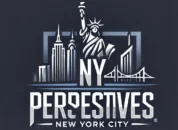The Old New York, Why did they kill it?
New York City in the 1960s was a city of electric contrasts—gritty, glamorous, and ground-shakingly transformative. It was the era of Mad Men and Malcolm X, of Andy Warhol’s Factory and the Stonewall uprising, of jazz lofts and garbage strikes. The city pulsed with cultural revolution and social unrest, often on the same block.
Culturally, NYC was the epicenter of avant-garde art and music. Pop Art exploded with figures like Warhol and Roy Lichtenstein, while Greenwich Village became a haven for beat poets, folk musicians like Bob Dylan, and experimental theater. The Living Theatre and Bread and Puppet Theatre pushed boundaries, often clashing with authorities over censorship.
Housing in New York City during the 1960s was marked by turbulent transformation, shaped by shifting policies, economic pressures, and urban renewal efforts that often did more harm than good.
1. Urban Renewal and Displacement: The decade saw aggressive urban renewal projects, especially under Robert Moses. Entire neighborhoods—like San Juan Hill in Manhattan—were razed to make way for developments like Lincoln Center. These projects disproportionately displaced low-income and minority residents, often without adequate relocation plans.
2. Decline of Public Housing Expansion: While the 1950s had seen a boom in public housing, the 1960s brought growing resistance. Voters rejected state bond issues in 1964 and 1965 that would have funded new low-rent units. Public sentiment shifted, with many viewing public housing as too costly and politically fraught. As a result, construction slowed, and attention turned to preserving existing housing stock.
3. Housing Abandonment and Rent Control Tensions: As buildings aged and maintenance costs rose, many landlords—especially in low-income areas—abandoned properties. Rent control, originally intended to protect tenants, was increasingly blamed for discouraging investment in upkeep. By the end of the decade, policymakers began reconsidering rent regulations, setting the stage for major changes in the 1970s.
4. Tax Incentives and Private Development: To stimulate construction, the city leaned on tax incentives. These programs helped break a housing deadlock and encouraged private developers to build, though often not for the poorest residents.
In short, the 1960s were a turning point: from building new housing to grappling with decay, disinvestment, and the unintended consequences of earlier policies. If you’re curious, we could zoom in on a specific borough or explore how these shifts affected working-class neighborhoods like the South Bronx or East New York.



